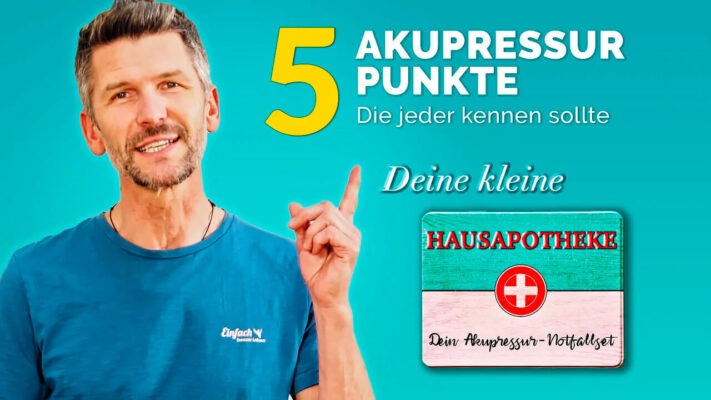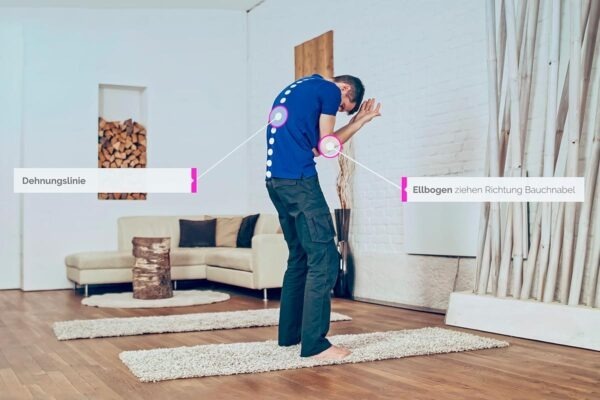Video: The 3 Qi sources
The 3 sources of Qi
I would like to bring you in this article Qi, the so-called life energy, a little closer. The character for Qi consists of 2 parts. Where the upper part stands for steam and the lower for rice. In eastern cultures, rice is the most important staple food. If you are aware of this, you can deduce the following for Qi from this character: Life energy is something subtle, ethereal, and at the same time, however, it is something gross like rice. So it has 2 basic qualities. Qi is as essential to life as rice is to food.
Qi as a long character of the Chinese script
When we look at the body, the question arises as to where this energy is to be found. It is understandable that we need energy for digestion, for example. Somehow a carrot or a piece of meat has to be turned into something the body needs, and in the same way carbohydrates and minerals have to get into the cells. This process also needs energy.
Our blood circulation needs energy so that the blood can be pumped the many thousands of kilometers through the body every day. The heart is the pump for this blood circulation and it needs a lot of energy. The sinus node, as the clock generator, gives an electrical signal to the heart muscle, which causes a contraction, i.e. a heartbeat. If there are problems with this clock, a pacemaker may have to be inserted. This does not work with air, of course, but with the help of an inserted battery. Now at the latest, even a skeptical person will realize that the body works with energy.
Also for us western people it is quite comprehensible and understandable that a fine energy current could circulate in our body. The people of the East knew this more than 2500 years ago. But as I said, you have to get involved with this world and this way of thinking, so that you are convinced of the positive effect.
If there is enough of this energy and it can flow freely, we are healthy. If it can no longer flow freely, diseases can arise. Imagine a battery. It seems to be static. But in reality there is a high charge, a great potential. If you now connect an electrical consumer, a radio for example, to the battery, electrons flow from the negative to the positive pole. This results in a flow of energy. The prerequisite for this, however, is a full battery and no interruption (blockage) in the cable or damage to the device. This is comparable to the processes in the human body. First of all, we need enough energy and secondly, as far as possible, "free lines" in which the energy can circulate. These so-called lines are called, in TCM, meridians.
Meridians can be thought of as energy lines that have a lower resistance than the rest of the tissue. Therefore, more "current" flows there. If one were to cut open an arm or a leg, however, no meridians would be found. This is because they are not a separate structure, like a nerve or blood vessel. The meridians run, as it is assumed today, in the connective tissue, i.e. in the, so popular, fasciae.
Nevertheless, one can imagine meridians, as fine tubes, in the body. But a tube must have neither a kink nor a knot, otherwise nothing can flow through it. It is the same with meridians. All techniques that act on meridians have the function of loosening knots and straightening the meridian, so to speak, so that more energy can flow again. The tools for this are: Massage, Acupuncture, Acupressure and Qi Gong.
Now the question arises: "where do we actually get our energy from?
1. from genetics,
2. from food and
3. from breathing.
Imagine a 1-year-old baby. It obviously already has a good amount of energy, innately, to keep its parents busy during the day, and often during the night. TCM assumes that at conception, when the egg and sperm fuse, the energies of the parents combine, and thus both pass on their potential to the child. The result is that a child comes into the world with more or less energy. Unfortunately, this cannot be influenced by us. This so-called energetic bank account, we will have to cherish for a lifetime, to stay healthy and live long. If this account is empty, the body dies and it possibly goes into the next round of incarnation.
What we can influence, however, is the second source of energy, the food. In TCM, food is seen as medicine, of great importance. Finally, one takes, 3 times a day, something to eat and this has a great effect on the body and consequently on our well-being.
We would now like to take care of the third energy source, around the so-called Breath Qi, take care. If you are a fan of yoga or tai chi, you have probably already dealt with this topic. You have learned to control and deepen your breath. As a result, you now take in more oxygen and life energy with every breath. Qi Gong is also called Breathing training because the breath is very much in focus. By practicing qigong daily, you replenish your energetic bank account. This is the best investment you can make for your future.
Because as we all know, without health everything is nothing!
The 5 functions of Qi
- Protective function: Qi protects the body from damaging influences from outside, such as heat or cold.
- Heat function: Qi takes care that the body is warm up to the extremities. If this is not the case, your hands and feet are cold, which can often be attributed to a lack of energy.
- Motion function: All physical, but also mental movements require energy. During the day, we constantly consume energy through our activities. Muscles and organs also need a lot of it. Just like the brain, which needs 20 %, our daily energy, for its thinking performance.
- Transforming function: Qi is also responsible for the digestion and transformation of food, i.e. for metabolism. Transformation means that something foreign to the body is converted into the body's own.
- Maintaining function: Qi also has the task to regulate body fluids and especially to keep the organs in their place. If this does not work, there are problems with the intervertebral discs, or sliding vertebrae or it comes to subsidence of the organs.

























